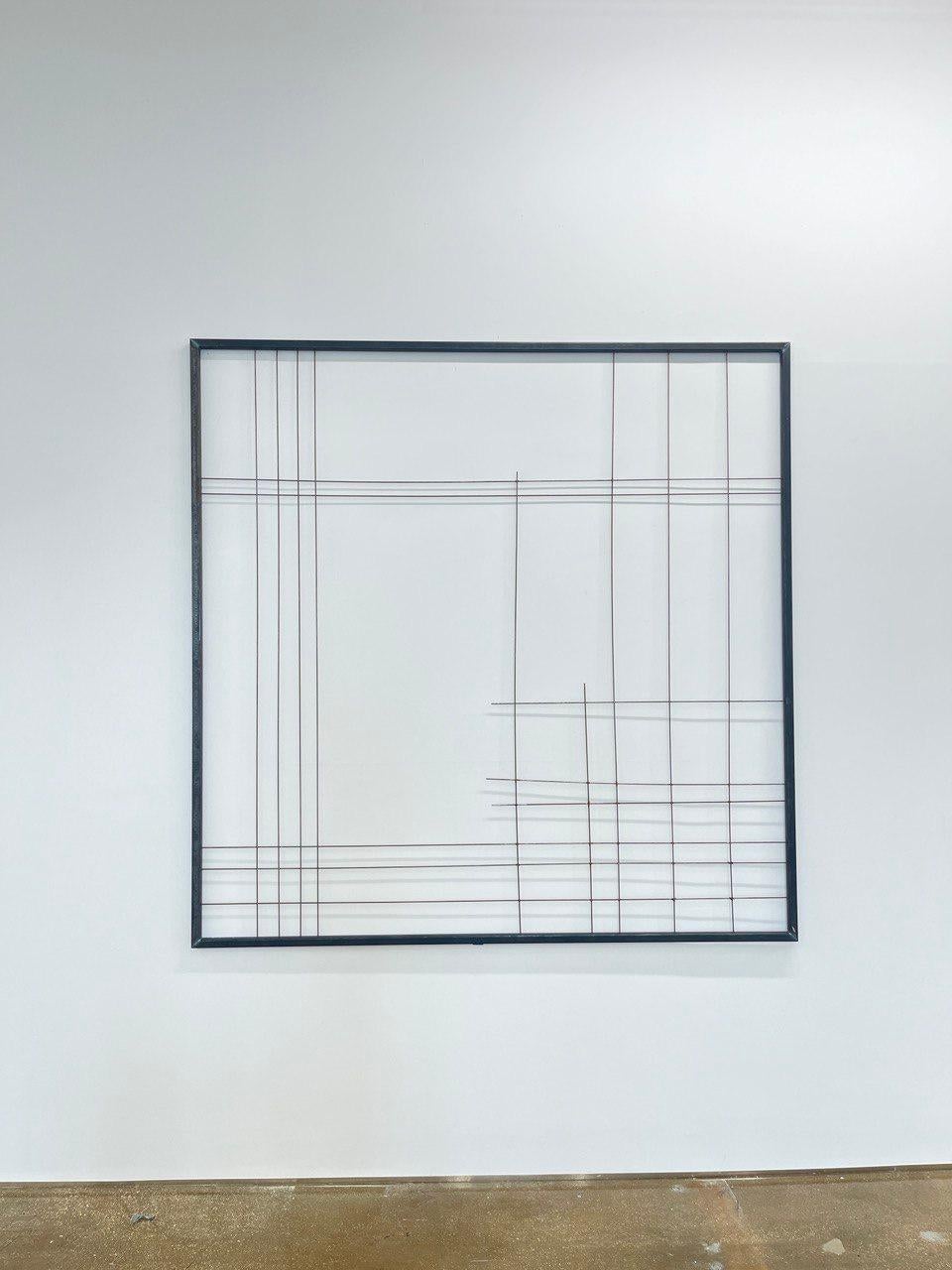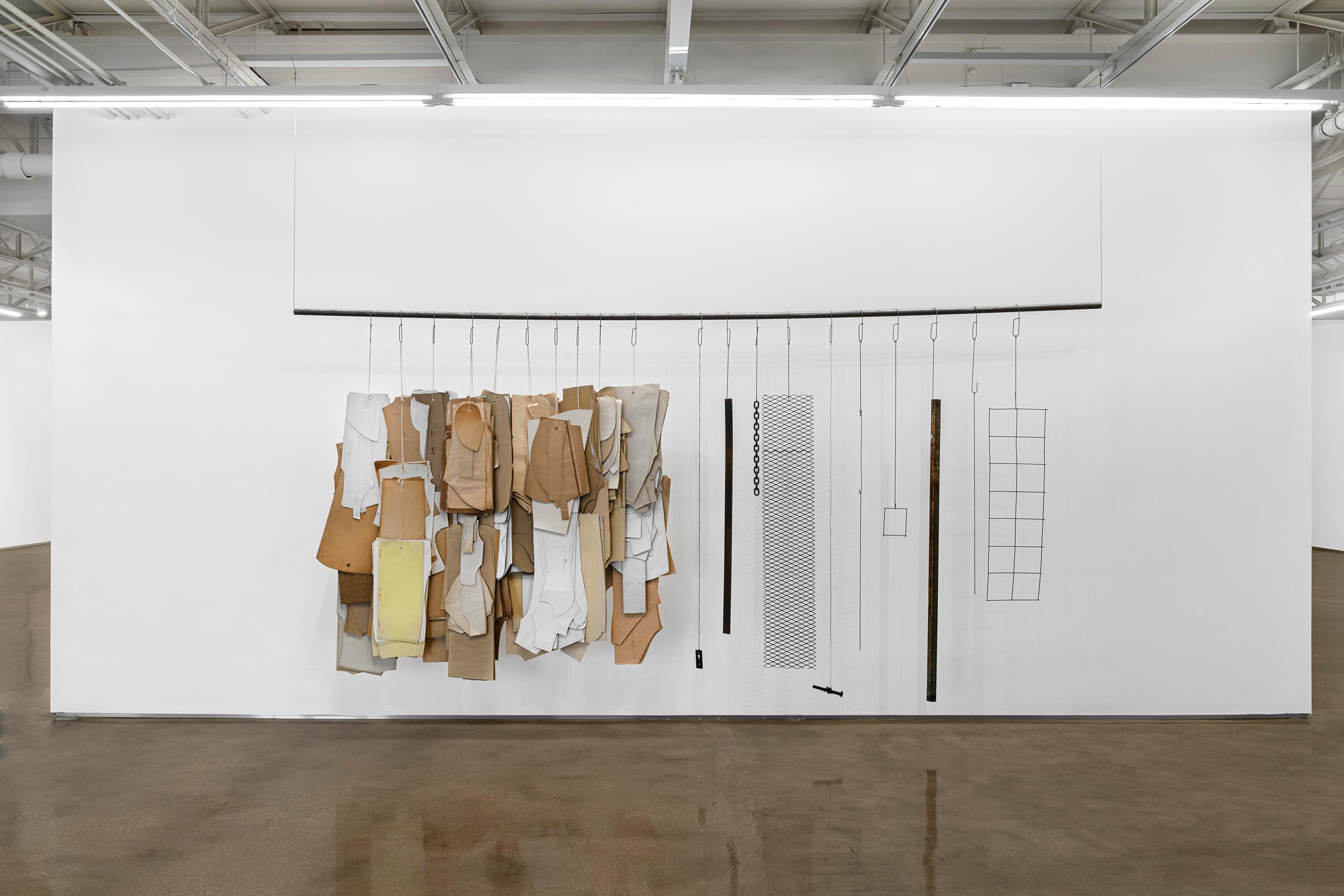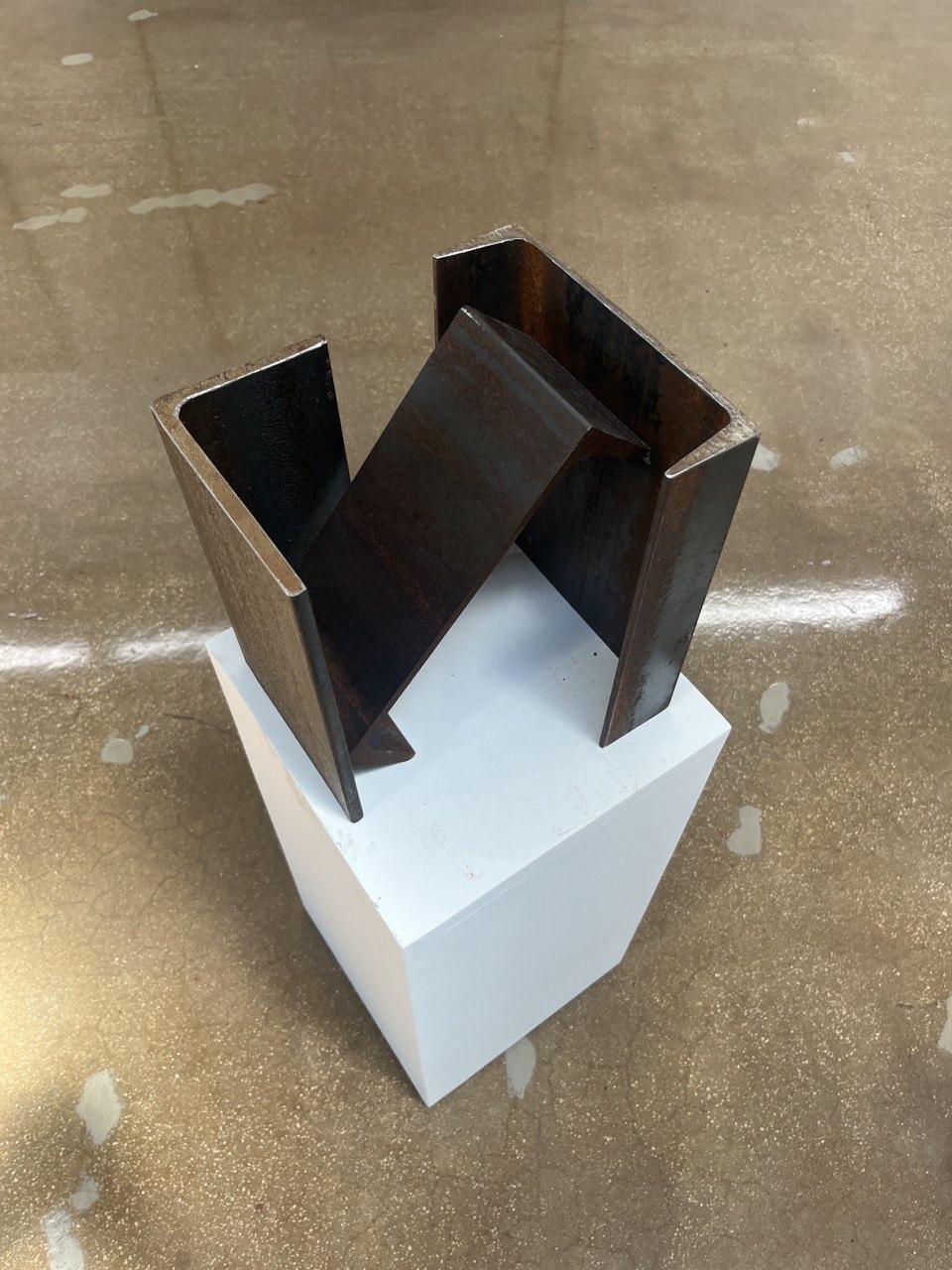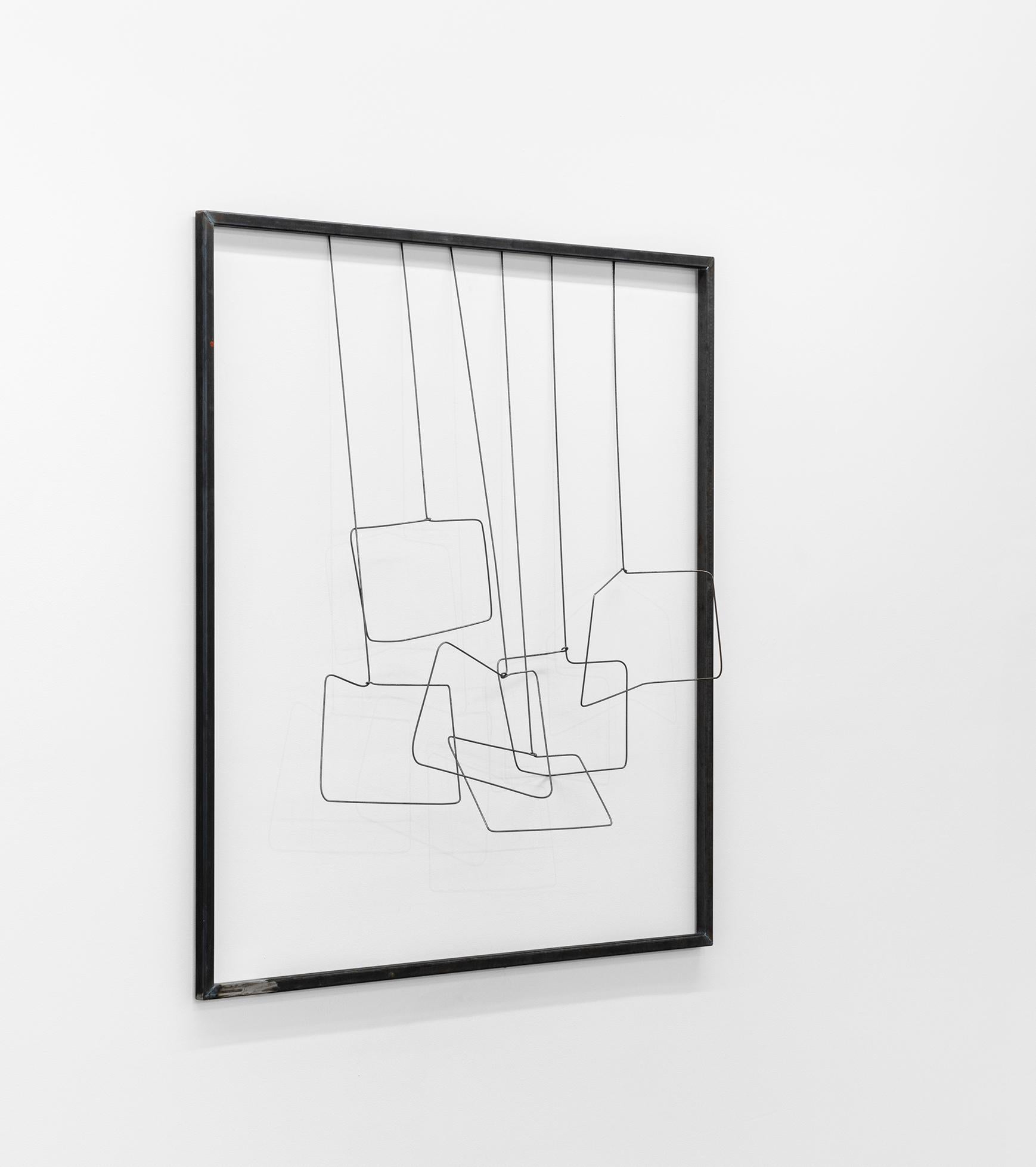Items Similar to "Nigerian Yoruba Medicine Staff, " a Hand Forged Iron Staff
Want more images or videos?
Request additional images or videos from the seller
1 of 5
Unknown"Nigerian Yoruba Medicine Staff, " a Hand Forged Iron Staffc. 1900
c. 1900
About the Item
"Nigerian Yoruba Medicine Staff" is a hand-forged iron implement created for medical practice in Nigeria. It depicts a central stick with a bird on the top surrounded by a circle of smaller radiating sticks.
19" x 15" x 13 1/2"
The Yoruba medical practice is most frequently used in West Africa and in the Caribbean and is a system of herbalism and psychotherapy. Started from the Ifa Corpus religious text, Yoruba practice focuses on expelling tiny organisms ("germs", "worms") from the body through a combination of herbs, plants, dances, gestures, and prayers.
This Nigerian staff depicts a bird, which was a common symbol of Osanyin, the spirit of herbal medicines, whom Yoruba priests and healers called upon to help fight mental and physical ailments. This bird figure is placed high so he can watch over humanity and protect them. The staff itself would have been placed upon an altar during ritual healing.
- Creation Year:c. 1900
- Dimensions:Height: 19 in (48.26 cm)Width: 15 in (38.1 cm)Depth: 13.5 in (34.29 cm)
- Medium:
- Period:
- Condition:
- Gallery Location:Milwaukee, WI
- Reference Number:
About the Seller
4.9
Platinum Seller
These expertly vetted sellers are 1stDibs' most experienced sellers and are rated highest by our customers.
Established in 1966
1stDibs seller since 2017
390 sales on 1stDibs
Typical response time: 1 hour
- ShippingRetrieving quote...Ships From: Milwaukee, WI
- Return PolicyA return for this item may be initiated within 14 days of delivery.
More From This SellerView All
- "Nigeria-Yoruba Medicine Staff, " Hand Forged Iron created c. 1900Located in Milwaukee, WI"Nigerian Yoruba Medicine Staff" is a hand-forged iron implement created for medical practice in Nigeria. It depicts a central stick with a bird ...Category
20th Century Sculptures
MaterialsIron
- "Nigeria-Yoruba Medicine Staff, " Hand Forged Iron created c. 1900Located in Milwaukee, WI"Nigerian Yoruba Medicine Staff" is a hand-forged iron implement created for medical practice in Nigeria. It depicts a central stick with a bird ...Category
Early 1900s Sculptures
MaterialsIron
- Abstract Kinetic Sculpture Statement Minimalism Balance White Bauman SignedBy Arthur BaumanLocated in Milwaukee, WI"Untitled (Sun Over the Rain Clouds)" is an abstract kinetic sculpture with many moving parts created by Arthur Bauman. The artist carved his initials into the red disc that hangs at...Category
Early 2000s Abstract Abstract Sculptures
MaterialsMetal
- "Sea Wind, " Bronze Portrait Sculpture signed by Judye FrankowiakBy Judye FrankowiakLocated in Milwaukee, WI"Sea Wind" is an original bronze sculpture by Judye Frankowiak. The artist signed the piece. It depicts a woman with wind-swept hair. It is number 8 from an edition of 10. 8 1/2" x 6" x 7" art B.A. Michigan State University, East Lansing, Michigan Further study: Newark State College, Elizabeth N.J.: Education Summit Art Center, Summit, N.J.: Sculpture 1970-1978: Milwaukee Public Museum, Milwaukee, WI. Worked under contract in Exhibits and Graphics Dept. to create life-size human figures for exhibits and dioramas 1970 to Present: Provided exhibit and diorama sculpture...Category
1970s Other Art Style Figurative Sculptures
MaterialsBronze
- "Cover Jar w/ Rooster, " Stoneware, Bronze, & Feathers signed by Ernst GramatzkiBy Ernst GramatzkiLocated in Milwaukee, WI"Cover Jar w/ Rooster" is an original stoneware vase by Ernst Gramatzki. 11 3/4" x 4 1/2" art Ernst Gramatzki is a world renowned artist, sculptor, potter, painter and poet. Some of his work is in the Smithsonian Institute in D.C. as well as in art galleries in both the U.S and Europe. Ernst was born in Koenigsverg, Germany, in the Russian sector near the Baltic Sea. The area is also referred to as Kaliningrad and is the birthplace of philosopher Emanuel Kant. His interest in art is the result of two Hungarian art students taken in as borders by his family following the Hungarian revolution. One, who is still well known throughout Europe, was a potter. "I shared half of the garage with him," said Ernst, who attended the School of Art in Hamburg. It was in 1961 that Ernst immigrated to the United States, taking a position with the Milwaukee Public Museum. He has lived in Rochester for nearly 30 years. Each room of his home is dedicated to a different art form. A room at the top of the stairs is filled with oil paints and multi-paneled works that are still in progress. In the basement, wet clay sits ready to be molded by inspired hands. Ernst still does work for museums, which sometimes directs where he focuses his energy each day. "I try to juggle the things I have to do with the things I want to do," he said. "One is always at the expense of the other. "I like to blow things up that people are too busy to look at," he said of his oil paintings. "You have to sit and look at things. You don't need to name things. That limits people in their imagination and what they would like it to be." An entire painting may be devoted to the stains on the bottom of a coffee mug, or a close-up view of a twig. Ernst said his inspiration can come from anything around him. He found a use for a dried-up grapefruit by using it as a mold for a clay stamp. Nothing, including an old corn cob, is overlooked as an artistic tool. "I dream lots of things. It's like turning on the TV as soon as I hit the sack," he said, working the surface of a clay toad he had sculpted the following day, using a walnut to stamp out some eyes. Most of his pottery takes the form of covered jars, each of which has its own number and entry in a journal that includes a sketch and to whom the piece were sold. The covers of the jars have small bronze sculptures for handles. Recently, Ernst has shifted gears and has been creating dozens of clay bird...Category
1990s Neo-Expressionist Sculptures
MaterialsBronze
- "Cover Jar w/ 2 Birds, " Stoneware and Bronze signed by Ernst GramatzkiBy Ernst GramatzkiLocated in Milwaukee, WI"Cover Jar with 2 Birds" is an original stoneware vase by Ernst Gramatzki. 9" x 5 1/4" art Ernst Gramatzki is a world renowned artist, sculptor, potter, painter and poet. Some of his work is in the Smithsonian Institute in D.C. as well as in art galleries in both the U.S and Europe. Ernst was born in Koenigsverg, Germany, in the Russian sector near the Baltic Sea. The area is also referred to as Kaliningrad and is the birthplace of philosopher Emanuel Kant. His interest in art is the result of two Hungarian art students taken in as borders by his family following the Hungarian revolution. One, who is still well known throughout Europe, was a potter. "I shared half of the garage with him," said Ernst, who attended the School of Art in Hamburg. It was in 1961 that Ernst immigrated to the United States, taking a position with the Milwaukee Public Museum. He has lived in Rochester for nearly 30 years. Each room of his home is dedicated to a different art form. A room at the top of the stairs is filled with oil paints and multi-paneled works that are still in progress. In the basement, wet clay sits ready to be molded by inspired hands. Ernst still does work for museums, which sometimes directs where he focuses his energy each day. "I try to juggle the things I have to do with the things I want to do," he said. "One is always at the expense of the other. "I like to blow things up that people are too busy to look at," he said of his oil paintings. "You have to sit and look at things. You don't need to name things. That limits people in their imagination and what they would like it to be." An entire painting may be devoted to the stains on the bottom of a coffee mug, or a close-up view of a twig. Ernst said his inspiration can come from anything around him. He found a use for a dried-up grapefruit by using it as a mold for a clay stamp. Nothing, including an old corn cob, is overlooked as an artistic tool. "I dream lots of things. It's like turning on the TV as soon as I hit the sack," he said, working the surface of a clay toad he had sculpted the following day, using a walnut to stamp out some eyes. Most of his pottery takes the form of covered jars, each of which has its own number and entry in a journal that includes a sketch and to whom the piece were sold. The covers of the jars have small bronze sculptures for handles. Recently, Ernst has shifted gears and has been creating dozens of clay bird...Category
1990s Neo-Expressionist Sculptures
MaterialsBronze
You May Also Like
- De la Serie ArchivosLocated in Miami, FLn/aCategory
2010s Contemporary Abstract Sculptures
MaterialsIron
- Los muchos, los juntos y los rotosLocated in Miami, FLn/aCategory
2010s Contemporary Abstract Sculptures
MaterialsIron, Wire
- UntitledLocated in Miami, FLDimensions are variable.Category
2010s Contemporary Mixed Media
MaterialsIron
- UntitledLocated in Miami, FLn/aCategory
2010s Contemporary Abstract Sculptures
MaterialsIron
- De la Serie ArchivosLocated in Miami, FLn/aCategory
2010s Contemporary Abstract Sculptures
MaterialsIron
- Dibujo en el EspacioLocated in Miami, FLN/aCategory
2010s Contemporary Abstract Sculptures
MaterialsIron
Recently Viewed
View AllMore Ways To Browse
Vintage Iron Art
Bird Figural
Hand Forged Iron Art
Medical Sculpture
Stick Sculpture
Prayer Sculpture
Medicine Sculpture
Altar Sculpture
Forged Iron Sculpture Sculpture
Iron Bird Sculpture
Watches From 1900
Bird Sculpture With Iron
Iron Sculpture Dancer
Nigeria Sculpture
Tiny Dancer
High Priest
Altar Art Religious
The Germ





